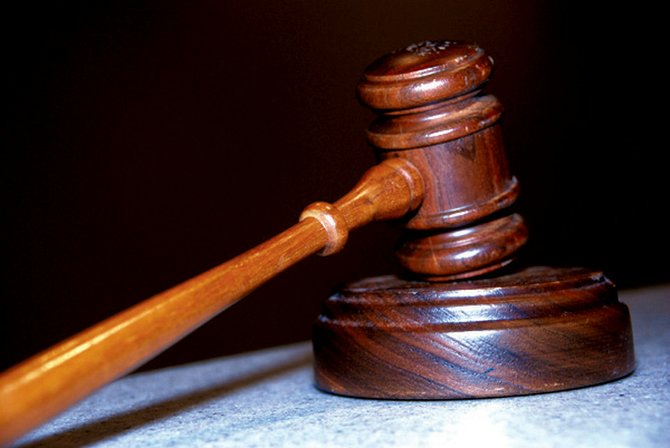By LAMECH JOHNSON
Tribune Staff Reporter
ljohnson@tribunemedia.net
COUNSEL in the trial of a man accused of murdering a banker in a ‘supposed perfect crime’ have made closing addresses to the jury.
Prosecutor Darnell Dorsette and defending attorney Dorsey McPhee spoke for nearly an hour yesterday on the evidence given in the week long trial of Franklyn Stubbs.
Stubbs, 29, denies the murder of Hywel Jones, 55, of West Bay Street.
Mr Jones had pulled up in the parking lot of his Compass Point office on April 22, 2009, when he was approached by a gunman and shot in the head as he was getting out of his Chevrolet Equinox jeep.
He was rushed to Doctors Hospital and died of his injuries two weeks later after being declared brain dead.
Stubbs was taken into custody a year later.
Prosecutors Darnell Dorsette and Basil Cumberbatch alleged that Stubbs was the gunman in an ‘execution-style’ killing.
Yesterday, Mr McPhee told the jury the prosecution had not produced evidence beyond a reasonable doubt and that his client was not a cold blooded murderer.
He said the Crown had yet to produce a motive for the claims that Stubbs killed Jones.
Referring to identification evidence of witness John Heney, Mr McPhee said this ID could not be relied on because Heney claimed that his client, positioned number four in the ID parade, resembled the person he saw on the day in question.
“I’m suggesting to you that Heney didn’t really identify Franklyn Stubbs. It’s a big difference between resembling someone and being the actual person,” the attorney said.
Mr McPhee claimed the identification was questionable due to the visit to the scene compared to what was testified in court.
“The only other evidence is a palm print and that raises issues with me,” said McPhee.
The attorney questioned the integrity of the palm print due to what he claimed to be a breach in the chain of custody in the handling of the evidence - a wooden baluster taken from the crime scene.
Mr McPhee said that many in the past had been wrongly convicted because of DNA and fingerprint evidence.
The attorney spoke of the evidence of an analysis expert who said that a breach in the chain of custody could affect the integrity of the fingerprint evidence in terms of alteration or possible contamination.
“I asked them [the police] about that. I asked the officers to tell the jury the significance of a broken chain of custody.”
The attorney said the integrity of the evidence reduced the chance of alteration, contamination or fabrication.
He claimed that based on the evidence of police during cross-examination, the chain of custody regarding fingerprint evidence was broken.
Mr McPhee told the jurors that there was no room for doubt when deciding on the evidence.
“I say if there’s room for doubt, something ain’t right. If you have a reasonable doubt, acquit,” he said.
Pointing at Stubbs he said: “I submit that he is not a cold-blooded murderer. And I submit that they [the prosecution] did not bring evidence beyond a reasonable doubt.”
Prosecutor Dorsette told the jury that based on the evidence and facts of the case ‘the killing of Hywel Jones was supposed to be a perfect crime.’
“But if not for a simple left palm print of Mr Stubbs, this case would’ve remained unsolved,” the prosecutor said.
“You also have the eye-witness testimony of ‘Mr A’ who was at the sea wall doing work and saw this same man when Hywel Jones pulled up, and jump the railing,” the prosecutor said.
Dorsette said it was not mandatory for the prosecution to produce a motive but added: “We have to prove a connection to this defendant.”
“How did his left palm print get on that railing?” the prosecutor said.
Ms Dorsette told the court that while the defending attorney had made submissions about a conspiracy on the part of the police to implant the palm print on the baluster, Mr McPhee had the chance to put it to the police witness that this was so and did not.
“He talked about the chain of custody? All of these officers work in the same office,” the prosecutor said,
“What interest would they have to frame him? It was never put,” the court heard.
Ms Dorsette claimed the evidence pointed to Stubbs, a man, he said, who had claimed never to have been in Gambier, as he had no friends or family in that area, but whose palm print was found at the scene.
“Not a soul came to say where this young man was. He didn’t even know where he was. But his left palm print was found on the railing and he hasn’t told you how it happened,” the prosecutor said.
Stubbs was the culprit behind a shooting that was purely an execution and not a robbery because no bag or lap top was taken from Mr Jones, only his life, said Dorsette.
“This is the man who was the triggerman who shot Hywel Jones,” the prosecutor concluded.
The trial concludes on November 19.





Comments
Use the comment form below to begin a discussion about this content.
Sign in to comment
Or login with:
OpenID